Best tennis balls 2024 – Complete online guide
Selecting the right tennis balls is crucial for optimal performance. Consider factors like quality, bounce consistency, court type, and more.
Use this table of contents to get to jump ahead.
What are tennis ball types?
| Type | Used for |
|---|---|
| Heavy duty – RD | Clay courts – slow courts – indoor courts |
| Extra duty – XD | HardCourt – fast courts |
| High Altitude Tennis Ball | Withstands high altitudes |
| Pressureless | Practice – Tennis ball machine |
| Junior (red-orange-green) | 6 years to 13-lighter than a standard tennis ball |
| Foam | 3 years to 5 – made of lightweight foam |
The 3 common tennis ball categories

This table summarizes the key differences between premium, championship, and entry-level tennis balls, including price, durability, performance, materials used, consistency, and the recommended user level.
| Category | Premium balls | Championship balls | entry-level balls |
|---|---|---|---|
| Price | Highest | Moderate | Lowest |
| Durability | Highest | Moderate | Lowest |
| Performance | The best | Excellent | Good |
| Materials | High-quality natural felt, rubber core | Basic quality felt (Synthetic), rubber core | Basic quality felt (Synthethic), rubber core |
| Consistency | Very consistent bounce and flight | Consistent bounce and flight | Less consistent bounce and flight |
| Best for | Professional tournaments, serious players | Intermediate to advanced players | Beginners, casual players |
| Usage | Professional tournaments | Competitive play | Recreational use |
Best tennis balls for 2024
After you’ve viewed the types and categories of tennis balls, we suggest the best tennis balls for every category
Premium tennis balls (USTA and ITF approved)
Premium tennis balls are a top-tier category of tennis balls, known for their exceptional quality and performance.
These balls are typically made with high-quality materials, ensuring durability and consistency in their bounce and flight.
They are designed for professional and advanced players who require precise control and responsiveness during their gameplay.
While premium tennis balls may come at a higher price point, their superior construction and performance make them a worthwhile investment for serious tennis enthusiasts.
WILSON Premium US Open Official Tennis Balls
Review: Starts pretty consistent, Nice bounce, Soft on the arm (arm friendly), Huge control. You’ll look like a pro using them. But less durable.
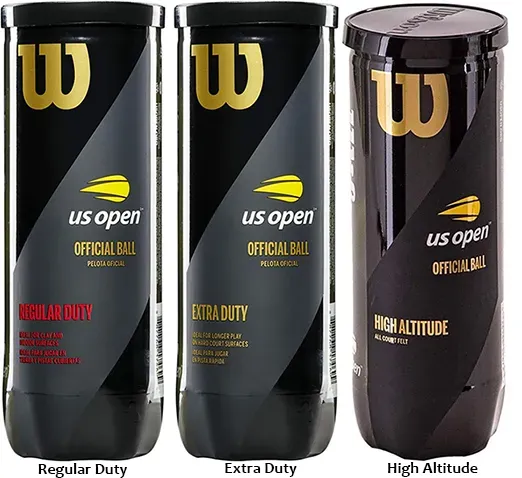
Dunlop Extra Duty ATP Tour official tennis ball
Review: Very consistent experience, they bounce and move as they should, acceptable spin very, and very affordable.
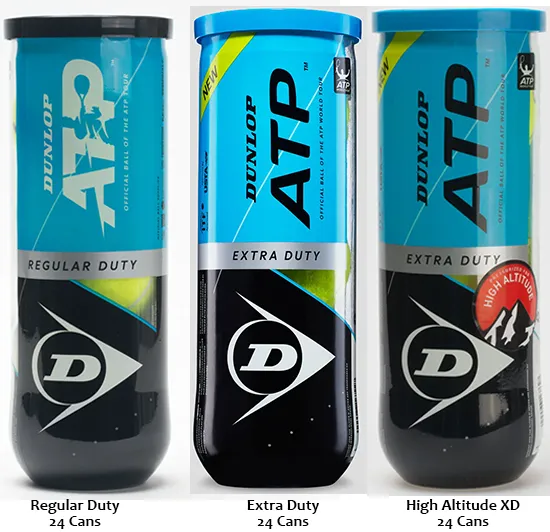
Slazenger Official Wimbledon Tennis Balls
Review: There is a distinction between Slazenger balls and Wilson or penn. The Slazenger have a significant bounce and last longer. They’re ideal for grass courts.
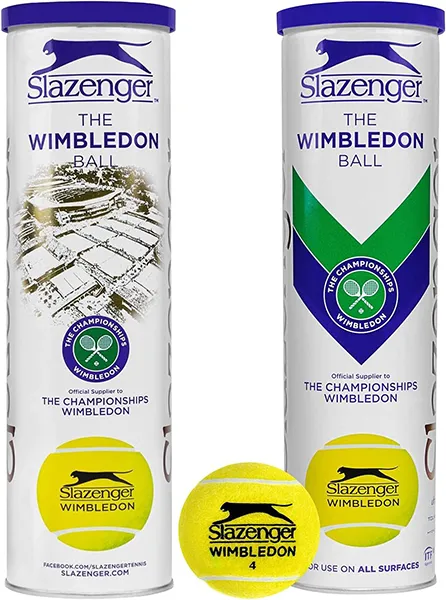
Penn Pro Marathon Tennis Balls
Review: This one takes 15 min of play to be more consistent, it’s bouncy and controllable. But overall it’s durable.
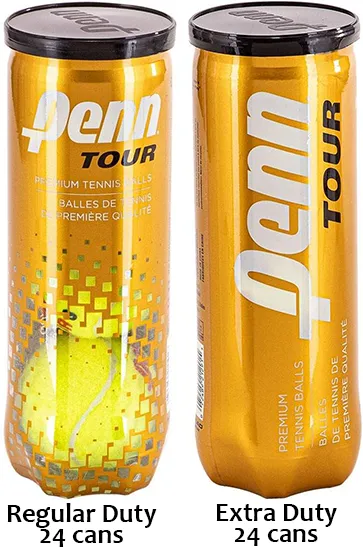
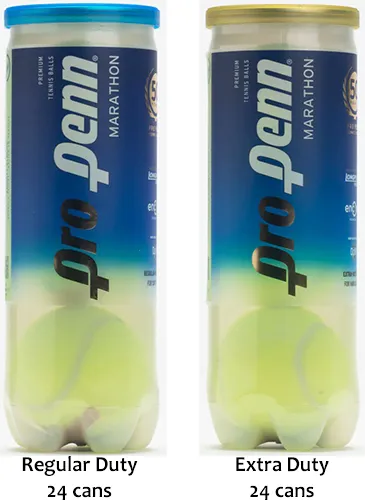
Diadem Premium Tennis Balls
Review: Has the most fluff, and it’s pretty soft.
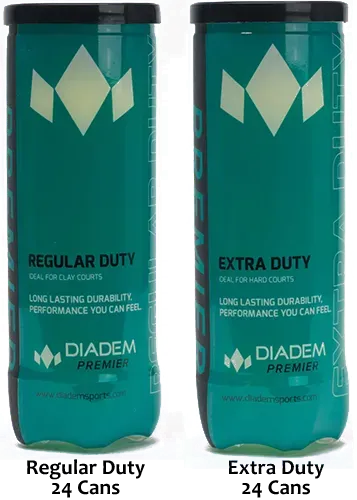
Tecnifibre X-One Extra Duty tennis balls
Review: They might seem uncomfortable at first hits, but they’re hard, durable, unforgiven fast balls.
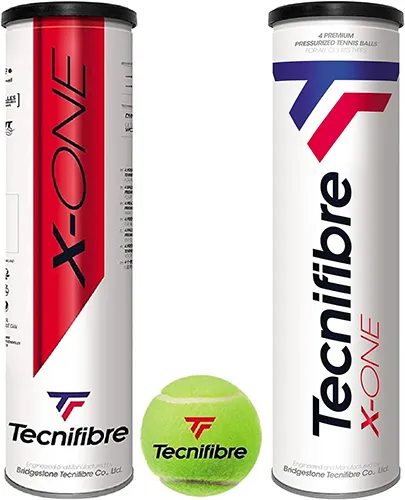
Head ATP Pro Tour Tennis Balls
Review: quality is quite interesting, very durable, great bounce.
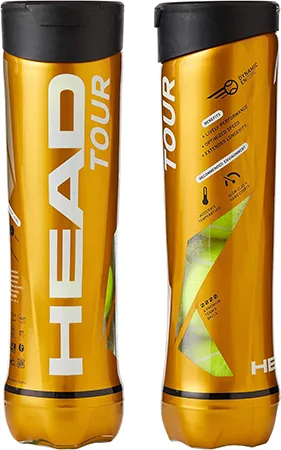
Championship Tennis Balls
These are the best balls for training.
Penn Championship Tennis Balls:
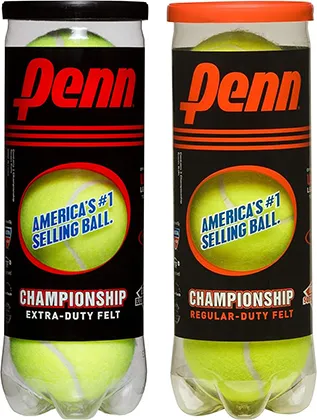
Dunlop Championship Tennis Balls
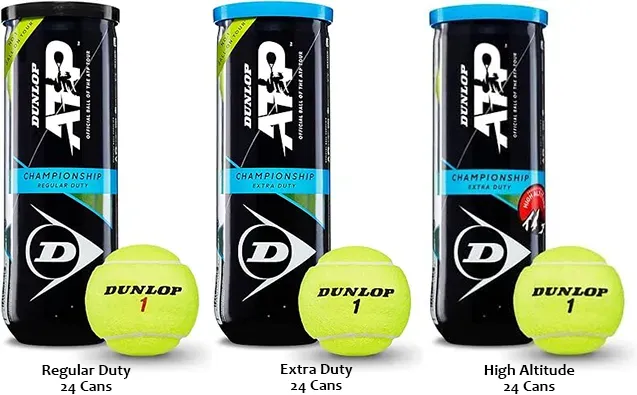
Other Championship Tennis Balls
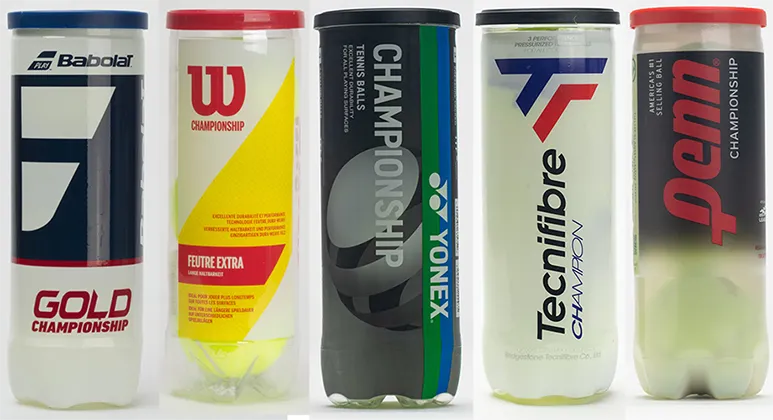
Pressureless Tennis Balls – Tennis balls for tennis ball machines
These tennis balls are optimal for training with tennis ball machines, they usually come in buckets or bags. We suggest buying these :
Spinshot Tennis Balls
These are adequate balls for tennis machines, but they come from a company that manufactures tennis ball launchers
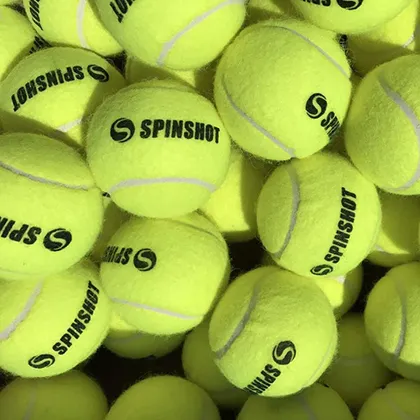
Nisplay Tennis Training Balls
We present you our second choice: nisplay pressureless balls, which also comes from a company specializing in tennis ball throwers.
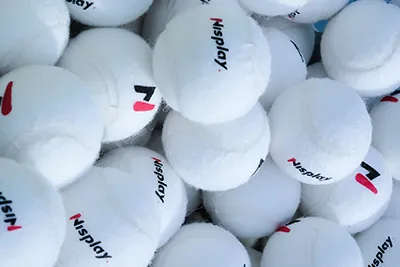
HOLABIRD sports Selection
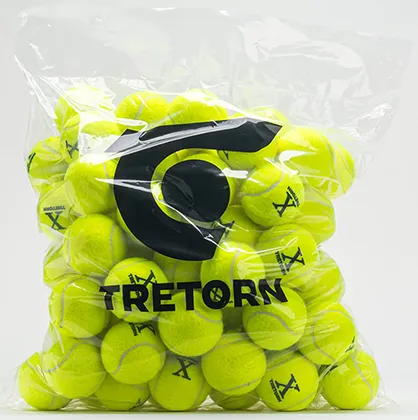
Junior tennis Balls
These balls are destined for beginners, especially kids between 6 to 13 years old.
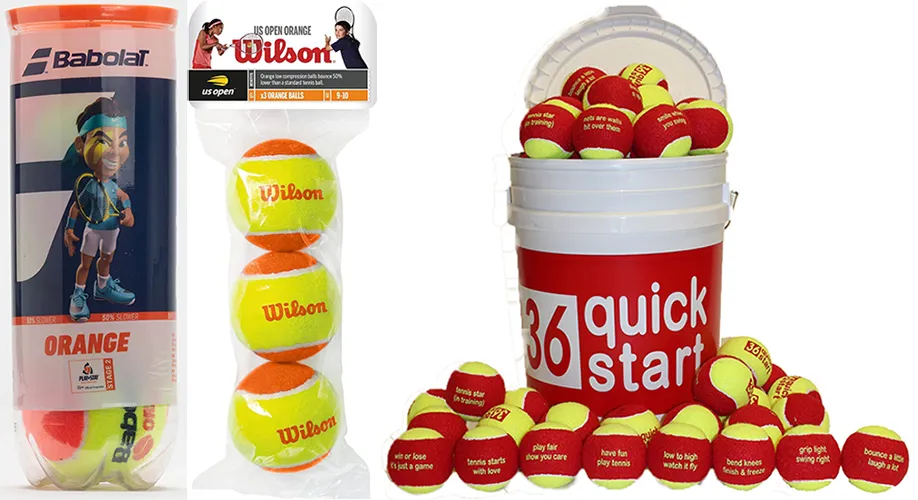
Foam Tennis Balls
These balls are made for weak muscle beginners like 4-5-year-old kids, they can ensure nice ball control from an early age.
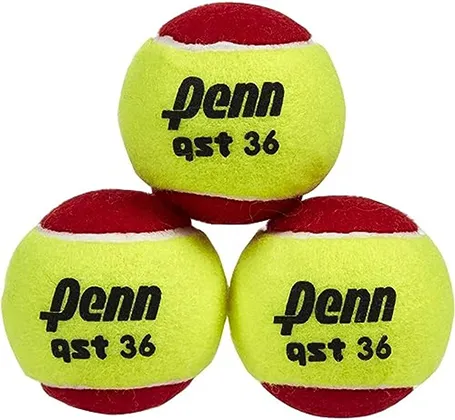
Detailed Tennis ball types
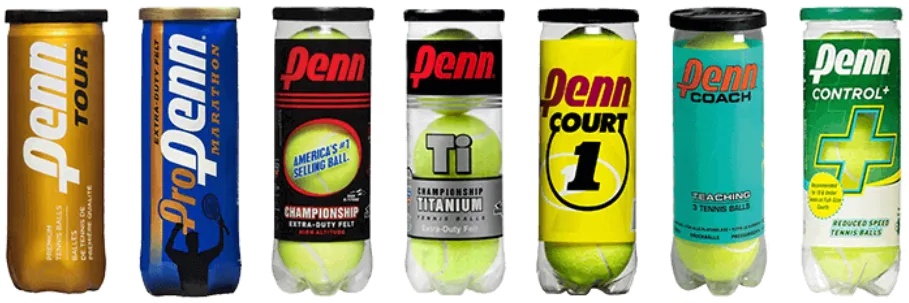
Regular Duty Tennis Balls – RD tennis balls – Best tennis balls for clay courts
- Here are the specifications typically associated with regular duty tennis balls:
- Material: Rubber core with a felt covering.
- Size: Standard tennis ball size, conforming to ITF regulations (approximately 2.5 to 2.7 inches in diameter).
- Weight: Standard tennis ball weight, typically between 56 to 59.4 grams (1.975 to 2.1 ounces).
- Color: Yellow or white, conforming to ITF regulations for visibility.
- Felt Thickness: Thinner felt covering compared to extra duty balls.
- Surface Compatibility: Designed for use on clay or indoor court surfaces.
- Durability: Offers sufficient durability for play on clay courts, but may wear out faster compared to extra duty balls.
- Resistance to Dirt Pickup: More likely to pick up clay particles, which can affect bounce and playability over time.
- Pressure: Pressurized with internal gas for optimal bounce and performance.
- Bounce: Provides a consistent bounce suitable for clay or indoor court play.
- Performance: Preferred by players who prefer a slower pace and more control, often used in clay court tournaments.
- Longevity: May require more frequent replacement compared to extra duty balls due to faster wear on clay courts.
- Packaging: Typically sold in cans containing three or more balls, with packaging designed to maintain pressure and freshness.
- Regulatory Compliance: Meets regulations set by the International Tennis Federation (ITF) for size, weight, color, and bounce.
- Usage: Suitable for recreational play, practice sessions, and tournaments on clay or indoor court surfaces.
- These specifications ensure that regular-duty tennis balls deliver reliable performance and durability suited to the specific characteristics of clay or indoor court surfaces.
Extra Duty Tennis Balls – XD tennis balls – Best tennis balls for hard courts
- Material: Rubber core with a durable felt covering.
- Size: Standard tennis ball size, conforming to ITF regulations (approximately 2.5 to 2.7 inches in diameter).
- Weight: Standard tennis ball weight, typically between 56 to 59.4 grams (1.975 to 2.1 ounces).
- Color: Yellow or white, conforming to ITF regulations for visibility.
- Felt Thickness: Thicker felt covering compared to regular duty balls for enhanced durability.
- Surface Compatibility: Designed for use on hard court surfaces, such as concrete or asphalt.
- Durability: Offers superior durability against abrasive court surfaces, minimizing wear and tear.
- Resistance to Dirt Pickup: Less likely to pick up dirt or clay particles, maintaining consistent bounce and playability.
- Pressure: Pressurized with internal gas for optimal bounce and performance.
- Bounce: Provides a lively and consistent bounce suitable for hard-court play.
- Performance: Preferred by professional players and those who play on hard courts due to their resilience and consistent performance.
- Longevity: Maintains consistent performance over multiple matches and practice sessions.
- Packaging: Typically sold in cans containing three or more balls, with packaging designed to maintain pressure and freshness.
- Regulatory Compliance: Meets regulations set by the International Tennis Federation (ITF) for size, weight, color, and bounce.
- Usage: Suitable for competitive play, tournaments, and practice sessions on hard court surfaces.
These specifications ensure that extra-duty tennis balls deliver reliable performance and durability, making them the preferred choice for players who compete or practice on hard court surfaces.
High Altitude Tennis Balls
- Material: Rubber core with a felt covering.
- Size: Standard tennis ball size, conforming to ITF regulations (approximately 2.5 to 2.7 inches in diameter).
- Weight: Standard tennis ball weight, typically between 56 to 59.4 grams (1.975 to 2.1 ounces).
- Color: Yellow or white, conforming to ITF regulations for visibility.
- Felt Thickness: Comparable to regular duty or extra duty balls.
- Pressure: Pressurized with internal gas, adjusted to compensate for lower air density at high altitudes.
- Bounce: Specifically engineered to provide consistent bounce and performance at elevated altitudes.
- Durability: Offers durability suitable for play at high altitudes, similar to regular duty or extra duty balls.
- Resistance to Environmental Factors: Designed to withstand variations in air pressure and temperature common at high altitudes.
- Packaging: Typically sold in cans containing three or more balls, with packaging designed to maintain pressure and freshness.
- Regulatory Compliance: Meets regulations set by the International Tennis Federation (ITF) for size, weight, color, and bounce.
- Usage: Specifically designed for use in locations with higher elevation, where air pressure affects the performance of standard tennis balls.
- Compatibility: Suitable for recreational play, practice sessions, and tournaments at high-altitude locations.
- Performance: Provides consistent bounce and playability, allowing players to adapt to the unique challenges posed by high-altitude conditions.
- Longevity: Maintains consistent performance over multiple matches and practice sessions at high altitudes.
These specifications ensure that high altitude tennis balls deliver reliable performance tailored to the unique atmospheric conditions encountered in mountainous regions or at locations with altitudes above sea level.
Pressureless tennis balls
Pressureless tennis balls are tennis balls that do not have a hollow core filled with pressurized air like traditional tennis balls.
Instead, they are made of solid rubber or similar material, which gives them a consistent bounce over time.
Pressureless balls are known for their durability and longevity compared to pressurized balls, as they do not lose their bounce even after extended use or storage.
They are often used for practice sessions, ball machines, and training purposes.
- Material: Solid rubber or similar durable materials.
- Size: Standard tennis ball size, conforming to ITF regulations (approximately 2.5 to 2.7 inches in diameter).
- Weight: Standard tennis ball weight, typically between 56 to 59.4 grams (1.975 to 2.1 ounces).
- Color: Yellow or white, conforming to ITF regulations for visibility.
- Internal Structure: Solid construction without a pressurized gas core.
- Pressure: Not pressurized; maintains consistent bounce and performance throughout its lifespan.
- Durability: Exceptionally durable, resistant to deformation and wear.
- Bounce: Provides a consistent bounce on various court surfaces.
- Suitability: Ideal for practice sessions, training drills, ball machines, and high-altitude locations.
- Longevity: Maintains consistent performance for a longer duration compared to pressurized tennis balls.
- Cost: While the initial cost may be higher, offers cost-effectiveness over the long term due to extended lifespan.
- Compatibility: Compatible with standard tennis ball machines and suitable for players of all skill levels.
- Regulatory Compliance: Meets regulations set by the International Tennis Federation (ITF) for size, weight, and color.
- Packaging: Typically sold in cans containing three or more balls, similar to traditional pressurized tennis balls.
- Environmentally Friendly: Often considered more environmentally friendly due to their long-lasting nature and lack of internal pressure components.
These specifications ensure that pressureless tennis balls deliver consistent performance and durability, making them a popular choice for practice and training purposes among tennis players of all levels.
Junior Tennis balls
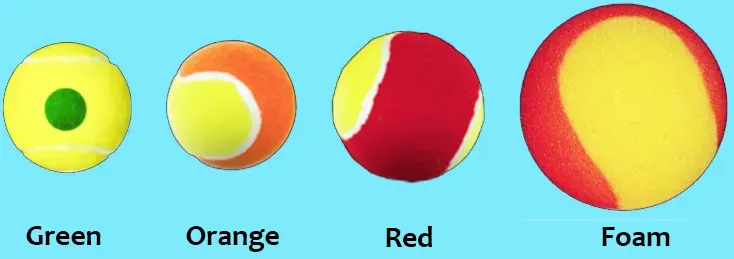
- Color: Brightly colored to enhance visibility and appeal to young players;
- Red Stage: Red
- Orange Stage: Orange
- Green Stage: Green
- Material: Rubber core with a felt covering.
- Size: Different sizes compared to a regular tennis ball;
- Red Stage: larger than a regular tennis ball (for players aged 6-8)
- Orange Stage: Slightly larger than a regular tennis ball (for players aged 9-10)
- Green Stage: Same size as regular tennis ball (for players aged 10-13)
- Bounce: Tailored to provide an appropriate bounce for young players on smaller courts;
- Red Stage: Balls bounce at about 25% of the height of regular tennis balls.
- Orange Stage: balls bounce at about 50% the height of regular tennis balls.
- Green Stage: Balls bounce at about 75% of the height of regular tennis balls.
- Felt Thickness: Comparable to regular duty or extra duty balls, but may be slightly softer.
- Pressure: Pressurized with internal gas, similar to standard tennis balls.
- Durability: Designed to withstand the rigors of junior play and practice.
- Packaging: Typically sold in cans containing three or more balls, with packaging designed to maintain pressure and freshness.
- Regulatory Compliance: Meets regulations set by the International Tennis Federation (ITF) for junior tennis balls.
- Usage: Specifically designed for young players transitioning from foam or low-compression balls to standard tennis balls.
- Compatibility: Suitable for use on standard tennis courts or smaller courts appropriate for junior players.
- Performance: Provides consistent bounce and playability, facilitating skill development and enjoyment for junior players.
- Longevity: Maintains consistent performance over multiple matches and practice sessions for junior players.
- Training Purposes: Often used in coaching sessions and junior tournaments to aid skill development and match experience.
These specifications ensure that junior tennis balls are suitable for young players learning the game, providing appropriate bounce, visibility, and performance to support skill development and enjoyment of the sport.
Foam tennis ball
- Material: Made entirely of foam material, typically a soft, lightweight foam.
- Age: 4 or 5 years old kids. Easy to manipulate for first practitioners.
- Size: The biggest tennis ball type, made for easier handling and to reduce the difficulty of hitting. Usually around 2.5 to 3 inches in diameter.
- Weight: Very lightweight compared to standard tennis balls to ensure ease of play. Generally weighs a fraction of standard tennis balls, often around 10 to 20 grams.
- Bounce: Provides a low, controlled bounce suitable for beginners, children, or practicing specific skills.
- Color: Brightly colored for high visibility, typically in colors such as red, orange, or yellow.
- Texture: Soft and cushioned texture, providing a comfortable feel upon impact.
- Pressure: Not pressurized, as they are made entirely of foam and do not contain an internal gas core.
- Durability: Foam construction offers moderate durability, but they are more prone to damage compared to standard tennis balls.
- Packaging: Typically sold in packs containing multiple balls, often in mesh bags or containers.
- Usage: Primarily designed for beginners, young children, and recreational play.
- Training Purposes: Frequently used in coaching sessions, tennis drills, and practice sessions to develop basic skills and techniques.
- Indoor/Outdoor Use: Can be used both indoors and outdoors (just have to avoid windy weather)
- Safety: Reduced risk of injury due to their lightweight and soft construction.
- Regulatory Compliance: Meets safety standards for junior tennis equipment and is suitable for use in introductory tennis programs.
- Skill Development: Designed to help players develop hand-eye coordination, timing, and basic stroke mechanics.
These specifications ensure that foam tennis balls are suitable for beginners and young children, providing a safe and enjoyable introduction to the sport of tennis while facilitating skill development and confidence building.
The biggest mistakes that players make when buying tennis balls
- Overlooking Quality: Opting for cheap balls without considering durability or performance.
- Ignoring Playing Surface: Not selecting balls suited to the court surface they play on.
- Disregarding Skill Level: Choosing balls not appropriate for their skill level, affects play quality.
- Ignoring Brand Reputation: Neglecting trusted brands, risking inconsistency and poor quality.
- Focusing Solely on Price: Sacrificing quality for lower cost, leading to shorter lifespan or poor performance.
- Not Considering Intended Use: Buying balls intended for professional play when they’re meant for recreational use.
- Buying in Bulk Without Testing: Purchasing large quantities without testing for suitability, leads to disappointment.
- You should consider the variety of types of tennis balls: Regular Duty, Extra Duty … as we’ve seen in tennis ball types.
Tips for tennis ball care and maintenance
- Storage: Keep tennis balls in a cool, dry place away from direct sunlight to maintain their integrity.
- Pressure: Store balls in a pressurized container or can to preserve their bounce and performance.
- Rotation: rotate (alternate) balls regularly during play to evenly distribute wear and tear.
- Cleaning: Remove dirt and debris periodically using a damp cloth to extend their lifespan.
- Avoid Water Exposure: Keep balls away from water to prevent them from becoming waterlogged and losing bounce.
- Use Properly: Avoid using balls on rough surfaces to prevent premature wear of the felt.
- Replace When Necessary: Replace balls when they lose their bounce or felt become significantly worn to ensure consistent play quality.
Does an unused tennis ball lose its bounce after opening the can for a long time?
Yes, tennis balls can lose their bounce over time even if the can is opened, even if you didn’t use them.
This is due to a gradual release of internal pressure within the ball, and exposure to air and environmental factors which affects its elasticity and bounce.
It’s recommended to store tennis balls in a pressurized container or can to help maintain their bounce for as long as possible.
Do pressurizers restore the original state of pressureless tennis balls?
Pressurizing machines can partially restore the bounce of tennis balls by reintroducing air into their core.
However, this process may not fully restore the original bounce and quality of the balls. But they can help extend their lifespan by re-pressurizing them to some extent (×3 lifespan).
